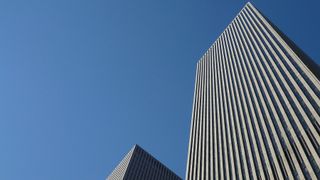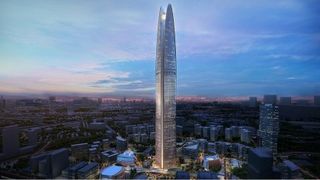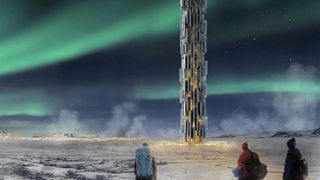How the smart building could save the world
Could automated buildings able to harvest their own energy help create a self-powered IoT?

As more and more smart devices and sensors talk to each other, swap data with the cloud and generally do more things more often (and there'll be 20.8 billion of them by 2020, according to Gartner) there's an increased blackout risk for entire nations. Not only is demand for energy rising, but there are worries that our current gadgets use more juice than advertised.
And although less than 1% of the Earth is covered in cities, these dense urban areas use three-quarters of our energy. There's also the consideration that a growing Internet of Things isn't going to help.
Cue the smart, automated building, where a mix of renewable energy harvesting and self-powered switches and sensors make possible a carbon-neutral built environment where buildings are cheaper to run, and never suffer from power outages. Can this come true?

Energy harvesting
There's a lot of talk about photovoltaic paint or thermoelectric paint creating 'solar skins' for buildings and vehicles that draw enough energy from the sun to heat the building, and much more. We will probably need to wait for the mass availability of low-cost graphene for that concept to collect enough power, but smart buildings are already producing renewable energy.
The Pertamina Energy Tower in Jakarta has a wind funnel at its peak that uses the increased wind speeds at about 500 metres up to generate energy. This 'beacon of energy' designed by Skidmore, Owings & Merrill LLP (SOM) (which also designed a zero-energy school in New York City) curves to maximise shade in equatorial Jakarta, and uses the power generated for indoor lighting.

Sustainable skyscrapers in the 'zettabyte era'
One of the big energy-guzzlers of the modern world are data centres, with the energy needed to cool the ever-expanding racks being ginormous. So why not build them in a cold place between the US and Europe that already gets 65% of its energy from hydropower and geothermal sources?
That's the thinking behind a project by Italy's Valeria Mercuri and Marco Merletti, which proposes hollow towers in Iceland where components are on the outside to be cooled for free by the chilly arctic air. This exciting concept bagged third place at the 2016 eVolo Skyscraper competition.
Are you a pro? Subscribe to our newsletter
Sign up to the TechRadar Pro newsletter to get all the top news, opinion, features and guidance your business needs to succeed!

The zero energy building
It's all about renewables. The concept of a zero energy building (ZEB) has been around for a few years – often as a misleading marketing term – and it's only recently that it's been officially defined. Late last year the US Energy Department defined it as: "An energy-efficient building where, on a source energy basis, the actual annual delivered energy is less than or equal to the on-site renewable exported energy."
Reacting to the news, Elizabeth Chu Richter, FAIA, president of the American Institute of Architects (AIA), said: "The quality of the future is wholly dependent on sustainable, resilient buildings that reduce the nation's reliance on non-renewable energy sources."
So how do we make ZEBs from existing building stock?
- 1
- 2
Current page: Introduction and sustainable skyscrapers
Next Page Smart skin and a self-powered IoTJamie is a freelance tech, travel and space journalist based in the UK. He’s been writing regularly for Techradar since it was launched in 2008 and also writes regularly for Forbes, The Telegraph, the South China Morning Post, Sky & Telescope and the Sky At Night magazine as well as other Future titles T3, Digital Camera World, All About Space and Space.com. He also edits two of his own websites, TravGear.com and WhenIsTheNextEclipse.com that reflect his obsession with travel gear and solar eclipse travel. He is the author of A Stargazing Program For Beginners (Springer, 2015),

'A game of chicken': Samsung set to launch new storage chip that could make 100TB SSDs mainstream — 430-layer NAND will leapfrog competition as race for NAND supremacy heats up

Intel quietly launched mysterious new AI CPU that promises to bring deep learning inference and computing to the edge — but you won't be able to plug them in a motherboard anytime soon
Most Popular

